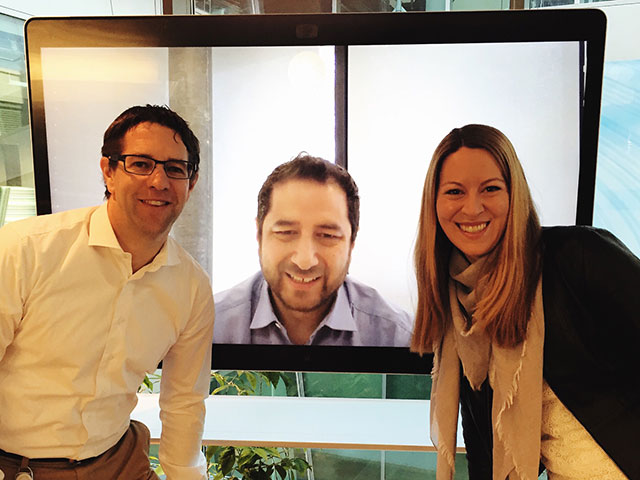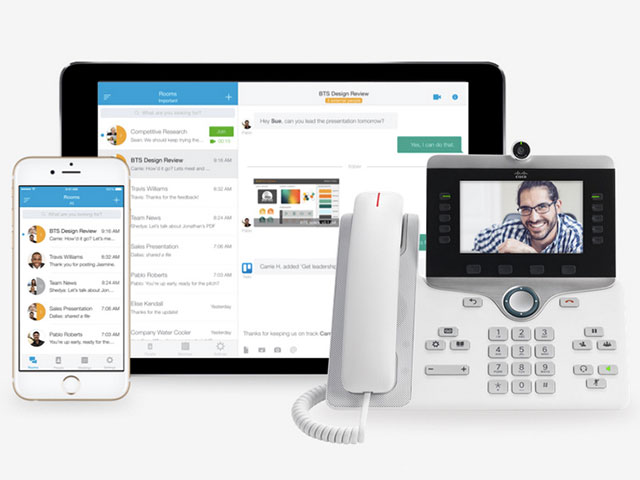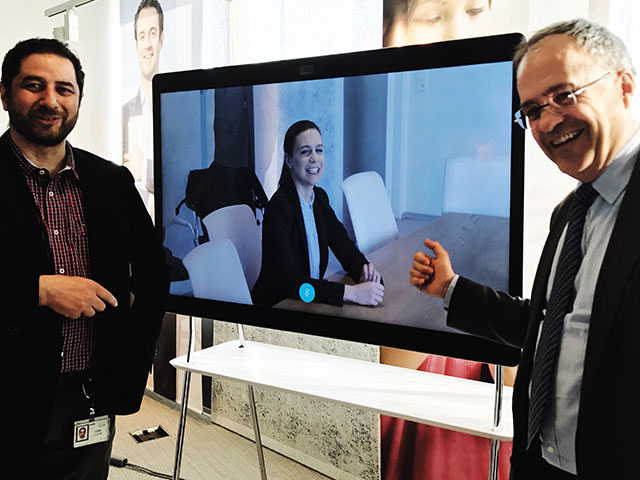2017-April-6
Did you know? You can share this story using the social media icons on the left. Please include the hashtag #WeAreCisco. You can also rate and comment on the story below.
Could You Ditch Email for Spark Overnight?

Dramatic change can be uncomfortable—even when it's for the better. Yet sometimes that's the cost of a bold and innovative vision. Just ask Cisco's Sales organization in Switzerland. They've been using Cisco Spark as their primary collaboration tool ever since one night last August, when General Manager Christian "Chris" Martin sent out what would become one of his last emails to his team.
Chris had just returned from GSX 2016 and was on inspiration overdrive, having seen the pre-launch of the Spark Board to our sales teams. He also attended a breakout session on how Spark outperforms tools like Slack, WhatsApp and Microsoft Lync. In an email to his Sales team following that session, Chris essentially declared an immediate end to email usage in favor of the wholesale adoption of Spark.
"Spark is our default communication tool for all internal communication," wrote Chris, whose digital journey began after he joined Cisco in 1999. "This is the last ‘official' communication from the Swiss management team to all of you via email."
Chris went on: If team members wanted to stay informed of what was happening in Switzerland, they needed to be part of the Swiss Spark room. All key information—weekly news, win messages, organizational announcements and changes, and all other official communication—would be done in Spark. It was time to embrace Spark for everything, whether demonstrating its collaboration capabilities with peers or doing follow-up meetings with customers and partners.
Our entire future collaboration business depends upon our customers moving and adopting Cisco Spark, so it was time to "walk the talk … and become a Spark ambassador," Chris wrote.
Connecting People and Cultures

Cisco Switzerland faces some unique hurdles when it comes to collaboration. Its more than 300 employees are spread across four offices in different corners of a country that has four official languages—German, French, Italian and Romansh, and embraces functions from Sales to Finance, Engineering or Marketing.
"It's a challenge bringing people together and creating a common culture," says Stephanie Kannacher, communications manager for Switzerland, Eastern Europe and Russia.
That's why, in the six years since Chris assumed the general manager role, he has been keen to adopt Cisco's latest collaboration technologies. And since Chris's ambition has been to make Cisco Switzerland a great place to work, he's always been focused on its people, culture and finding the most human ways of interacting. So, when Spark came along, Chris was quick to catch the flame—and to spread it like wildfire.
"It's a new definition of the workplace," Chris says, adding that Spark aligns neatly with Our People Deal's "We Connect Everything" pillar.
A Bumpy Ride

Getting the entire Sales team on board with Spark was another matter. Boosting adoption took a lot of convincing, a lot of guidance and a lot of time—especially as Spark was uneven in the organization, and the tool was not as sophisticated then as it is now.
"It was a bumpy ride," Niema Nazemi, Swiss Head of Collaboration and Applications, recalls. "People needed to change their working habits and adopt new ones."
But the investment proved well worth it. Aside from calendar invites, which are still done via Outlook, Spark is used on all levels today, for official, team and project-related communication, as well as for a weekly news format created by the Swiss management team and produced in a Cisco TV studio called "The Green Room".
"We became way more agile and productive," Stephanie says. "No project group could start today without Spark—even more with the Spark Board coming in."
Every account manager knows how to use Spark—for demos, for audio and video collaborations, for workshops with partners and customers, and more. And because it's a Cisco cloud solution, Spark is readily accessible to internal and external users. (If a customer or partner is not a Spark user, presenters can enable an account for them on the fly in the workshop, or share a link in a Spark room.)
In addition to increased productivity, Spark helps with organizing things like employee activities. It also has a poll bot that's useful for employees who have survey fatigue.
"Spark is so easy that a non-technical executive can use it in a very natural way," says Niema. "Every account manager is a potential collaboration specialist who knows the tool."

Spark usage is far higher in Switzerland than anywhere else in EMEAR. And the excitement is catching on elsewhere. Cisco's Rowan Trollope is using Spark on a global level. The Central Theatre region, where Switzerland is part of, is increasing usage. And Spark was used to interact with partners during the Partner Summit last November.
Is Spark here to stay in Switzerland, or will email be making a comeback? Adoption is not yet at 100 percent, but at last check the volume of email had shrunk significantly. According to a recent usage survey amongst the Swiss sales management team, they are 12-to-1 in favor of staying with Spark.
"It makes leadership and employee communication more human, so we would not go back," Stephanie says.
Call to Action:
Related Links:
Connect everything. Innovate everywhere. Benefit everyone.
Share your thoughts!
Log in to rate and commentShare your thoughts on the story here!